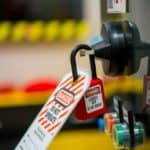How efficient is your preventive maintenance program? Most managers would say that they are achieving 70% to 80% efficiency in their work processes. The reality is that the typical preventive maintenance program only achieves a staggeringly low 25-30% efficiency for labor hours. Where do the other hours go?
Predictive Service has developed methods for applying recognized Lean techniques for identifying waste in each work type in the preventive maintenance process. By identifying and eliminating the “pure waste” in PMs, most maintenance organizations can achieve an average of 40% reduction in PM labor. We will be sharing how to achieve this efficiency in a series of blog posts over the next several weeks.
What is preventive maintenance waste?
Waste (muda) is any step in a process which is not value added. In other words, anything that the customer would not be willing to pay. Value added work is any activity which directly touches the product. Non-value added work may be necessary as part of the production process, but is any activity that does not change the form, fit or function of the product.
There are two types of muda:
Non-value added and unnecessary – mostly policies and/or activities that can be stopped immediately and that always inspire the question, “Why do we do that?”
Non-value added but necessary – activities that you are forced to do based on system limitations.
One of the key steps in Lean is the identification of muda and finding ways to mitigate it at its source. In maintenance, the same applies. Value-added work or productivity (productivity replaces the ever-elusive “wrench time”) is all of the time paid for minus non-value-added activities. These can include expediting, waiting, moving, counting, scheduling, and queue time.
“Busy” is usually interpreted as “productive.” But this is not always the case. Frequently the maintenance organizations that feel the most overwhelmed are those that have not embarked on a program of analyzing whether or not they are doing the “right” work most efficiently. Even when companies have implemented Lean techniques in the production process, the maintenance organization can be a poor stepchild in the Lean program. If Lean principles are not also implemented in the maintenance process, the push for maximum uptime can lead to new inefficiencies as reactive maintenance levels increase. The solution to relieving the resulting organizational pressure is a systematic evaluation to identify waste and inefficiencies in the maintenance process, to increase the throughput of the organization by ensuring that crafts are doing the “right” thing most efficiently.
In maintenance, there are three primary families of work types, each with their muda, including preventive, corrective, and reactive maintenance.
When a maintenance organization begins a process of classifying activities into these three categories, it is then possible to start identifying ways to reduce the waste in the maintenance workload. The identified muda can then be further divided into non-value-added work that needs to be done (still classed as waste) and pure waste resulting from inefficiencies. Once the pure waste is identified, it makes it easier to effect a culture change that will eliminate the waste from the maintenance program. This is a critical step in achieving world-class maintenance productivity.
SEAM Group will present the “7 Wastes” as part of the Lean process. Recognized and incorporated in production by companies with Lean initiatives, they are also directly applicable to any process. For this series of blog posts, we’re going to focus on the 7 Wastes in Preventive Maintenance. As we share with you each loss, the waste will be described as seen in a production environment, and then examples of the same type of waste will be given as applied to Preventive Maintenance.
The 1st of the 7 Wastes, to be discussed in our next blog post, is Over-Production.





